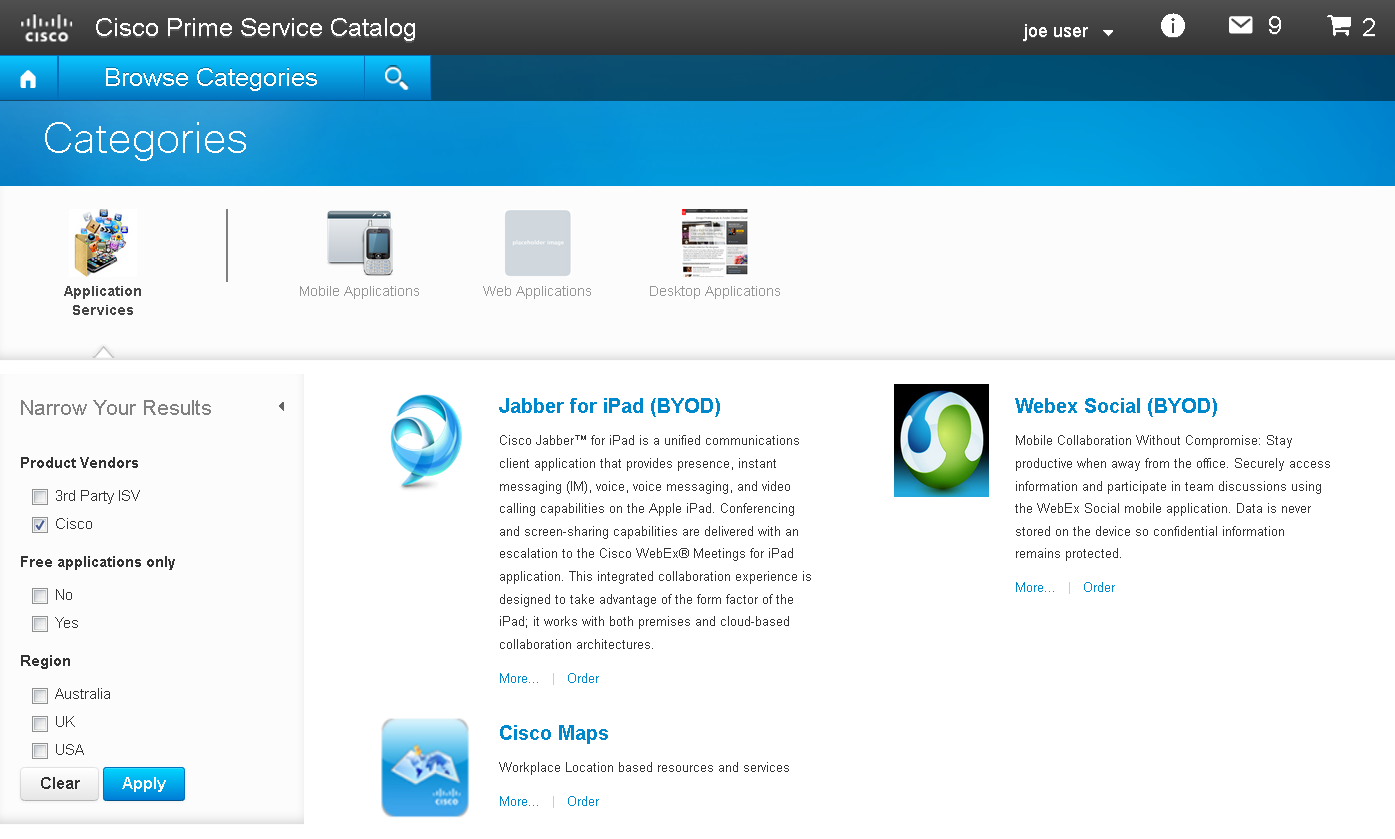































I'm excited to announce the recent release of our next-generation service catalog software, Cisco Prime Service Catalog version 10.0.

(Click here for a larger image.)
As previously introduced in my colleague Song's blog post, Cisco Prime Service Catalog is an industry-leading IT service catalog solution for any managing any type of service request -from desktop to mobility to data center. If you aren't familiar with our product already, make sure to watch this video:
http://www.youtube.com/watch?v=DUzkW5yf9RY
In most organizations, there is no single system or "app store" that end-users can use to request all the IT tools and services they need to do their job. There are typically different siloed processes for ordering, fulfilling and tracking each of those IT resources (e.g. mobile devices, laptops, applications, infrastructure, access to systems). And with the continued proliferation of new technologies and applications, this has become increasingly frustrating for end-users -and more challenging for IT service delivery teams. Cisco Prime Service Catalog provides a modern and unified approach to solve these problems, with a simple and user-friendly service catalog that eliminates the complexity of ordering services across these different IT silos.
The results? Increased productivity for end-users. Faster and more efficient IT service delivery. Higher IT customer satisfaction scores and greater IT-business alignment.
So what's new in the latest version of Cisco Prime Service Catalog? Version 10 is packed with several new features and enhancements, including:
Depending on who they are in the organization, end-users will have a different view of the catalog -based on role-based access controls. So your employees can search and browse through the catalog to find and download different mobile and desktop apps:

(Click here for a larger image.)
And your developers can sort and filter for standard application stacks that they need for testing and development:

(Click here for a larger image.)
You may have heard the buzz about the internal Cisco IT deployment of Cisco Prime Service Catalog, dubbed the "eStore". It's been featured in a number of articles in the media as the internal enterprise app store that powers Cisco's BYOD and mobile apps program -and provides Cisco employees with a one-stop shop for all IT services (from desktop to data center). If you're attending Cisco Live in Milan later this month, you can learn more about the case study in this "Inside Cisco IT" session here.
Another service catalog case study that we're featuring at Cisco Live Milan is Steria. Steria is a great example of one of our service provider customers in Europe; they've used Cisco Prime Service Catalog to enable on-demand, self-service delivery for a broad range of IT workplace services, including desktop and mobile applications. You can read more in my earlier blog post -or if you'll be in Milan, check out the session here.
During the week of Cisco Live Milan, you will also hear more about Cisco Prime Service Catalog version 10.0 in the context of our soon-to-be-announced new release of Cisco Intelligent Automation for Cloud (IAC). Cisco Prime Service Catalog is one of the bundled components within this cloud management software solution, so the enhancements in version 10 are also reflected in the upcoming new release of Cisco IAC. You can join one or more of the Cisco Live Milan sessions listed here to learn more about Cisco IAC.
In the meantime, check out http://cisco.com/go/service-catalog to learn more about Cisco Prime Service Catalog.
 Hot Tags :
Cisco Live
Data Center
IT
IAC
Intelligent Automation for Cloud
End User
desktop
eStore
portal
Hot Tags :
Cisco Live
Data Center
IT
IAC
Intelligent Automation for Cloud
End User
desktop
eStore
portal